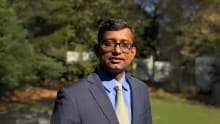The way we match people and jobs is still too flawed: Paul D’Arcy, Indeed

While technology is rapidly changing the way talent acquisition is evolving and more and more jobs are now online than ever before, yet finding the right talent for the requisite job is still a game of matchmaking that can either go terribly wrong or wonderfully right. What is it that TA leaders can do differently to need to improve hiring? How can technology be leveraged as a strong tool in their arsenal? How can building a strong employer brand help you attract the right talent?
In an exclusive interaction with People Matters, Paul D’Arcy, Senior Vice President, Marketing, Indeed throws light on how can TA leaders improve upon talent acquisition, the future of job sites and the increasing importance of employer brand in TA.
How have you seen the Talent Acquisition function evolve over the years? What are some of the changes you have seen in this space?
There have been a lot of changes in the TA space and it continues to change quickly. The biggest change that we have seen is that job seeking has moved online at an incredible rate. Take for instance in India today, 76 million people visit a career related site every month. And this is almost double the number it was two years ago. And this shift has required organizations to be much more digital in terms of how they do recruitment.
“But I think the most interesting change is really the evolution of the employer brand. For most people, work is the most powerful source of identity. When you go to work for an organization, you inherit the brand of the company you are working for.”
And now smart recruiting organizations focus a lot on telling that story of why someone would be proud to work for the organization. There is a lot more information and job seekers are much more focussed on understanding that.
In this changing scenario, what are some of the technologies that TA leaders should be leveraging to improve hiring and talent acquisition?
I have a mixed feeling on technology-in many ways, it is still the human elements of recruiting that are most important. It’s really important to be able to connect with a candidate as a person in a human way, it is important to tell a story that is meaningful and true-that what is it like to work for the organization. So these elements still remain important.
As far as the technology aspect is concerned, when you have a job you are looking to fill, it is important to get it out on the right digital platforms. There are a lot of job seekers out there and it’s important to make sure they all see it. Then you have the best chance of finding the right candidate. The other important thing is to that organizations strike the right balance between inbound and outbound recruiting-i.e. recruiting people who are passionate to work for your organization as well as the ones who have skills that are difficult to find, through outbound recruiting.
What do you think is going to be the future of job sites? Will they still remain relevant in the future or is that also going to change?
I believe over time, job sites are going to play a bigger and bigger role in how people find jobs and how they get hired. The fundamental technologies that are enabling job sites to grow and get better at matching will help millions of job seekers to find the right job and employers to find the right candidates.
“The future of looking for a job is someone carrying their job search around with them on their phone, being notified when their dream job becomes available, and very quickly be able to do research that it is the right employer for them, and then apply to that job with just a single click.”
That is already partially true, but over time, this is what most job searches will look like.
What are some of the skills job seekers need to imbibe to stay relevant and future proof even as technology and job search is changing continuously?
The starting point for job seekers is to make sure that they have the right skills for what employers are looking for and that they invest in getting those skills. The next thing is to clearly figure out how to tell your story and that it resonates in your application.
“The average employer spends only 6 seconds at a resume and so a job seeker needs to create a six-second resume-something that can be very quickly looked at and things that are special about you shine through instantaneously.”
What are the top three metrics that TA professionals should track to measure the impact on business performance?
The most important thing for organizations is to understand which were their most successful hires and then to be able to look at everything in terms of that. The deeper they go, the better-where they came from, how were they recruited, who are the employees who have stayed the longest and created the biggest impact-so that they can look for more such hires.
It is also important for recruiters to understand the experience of job seekers with employers at every stage. You want to measure if they had a good experience and how were they treated.
What are the top challenges for TA leaders in the talent acquisition space today?
One of the biggest problems for TA leaders today is the way we match people and jobs is still too flawed. Job descriptions still don’t clearly represent what it is like to work at a company or what the job is going to be like, they also tend to be not very well written or clear or inspiring.
“Also resumes can’t really summarize all of the amazing ways a human being can contribute to an organization.”
So even though job search is becoming more online and hiring more digital, we need to figure out how best to represent what’s really important about the job and the company and how to create that match in much better ways.















